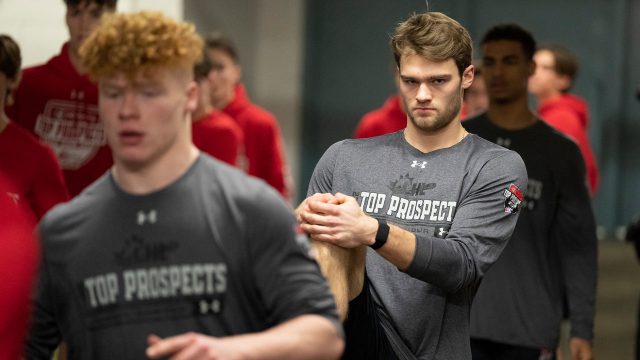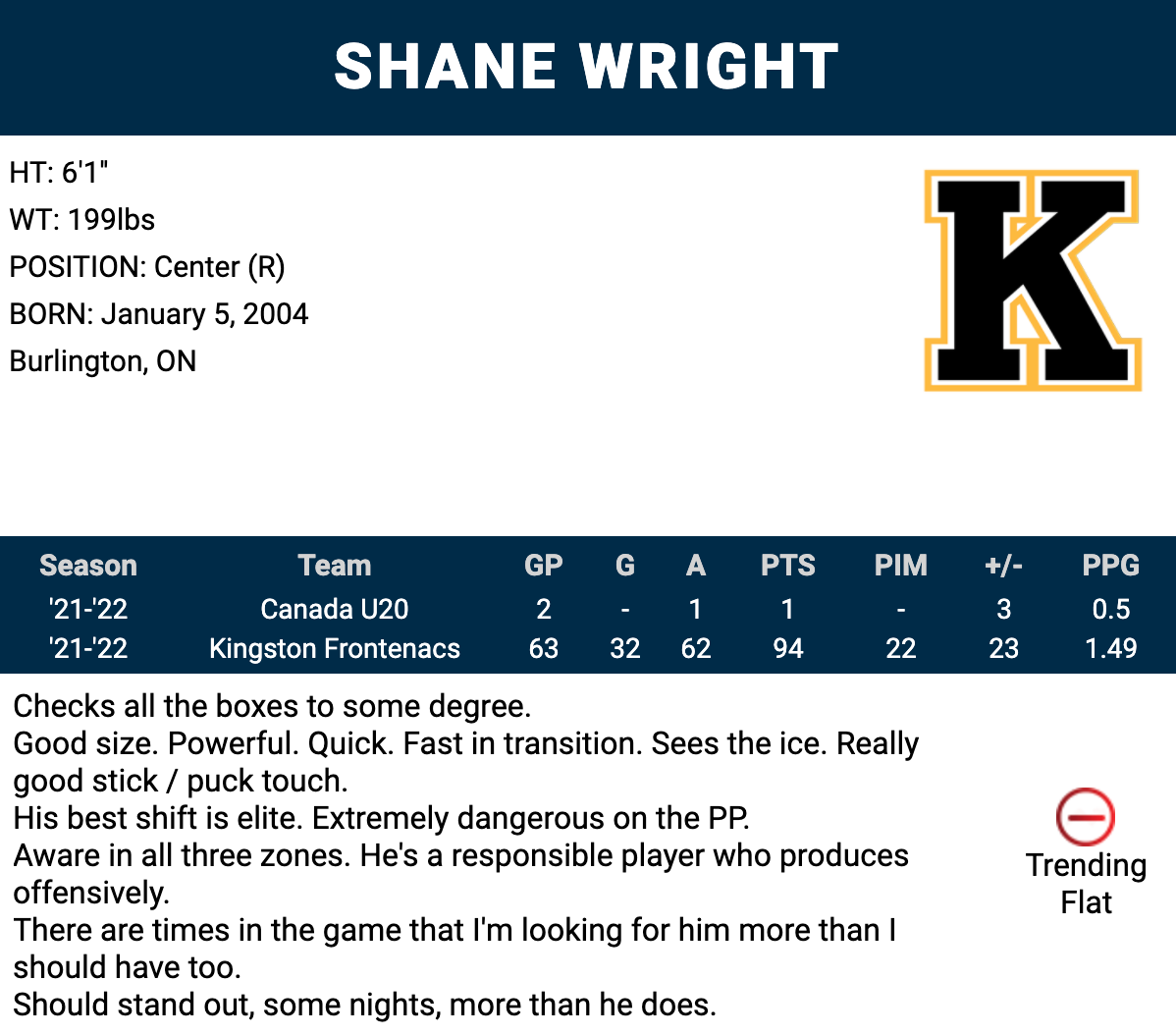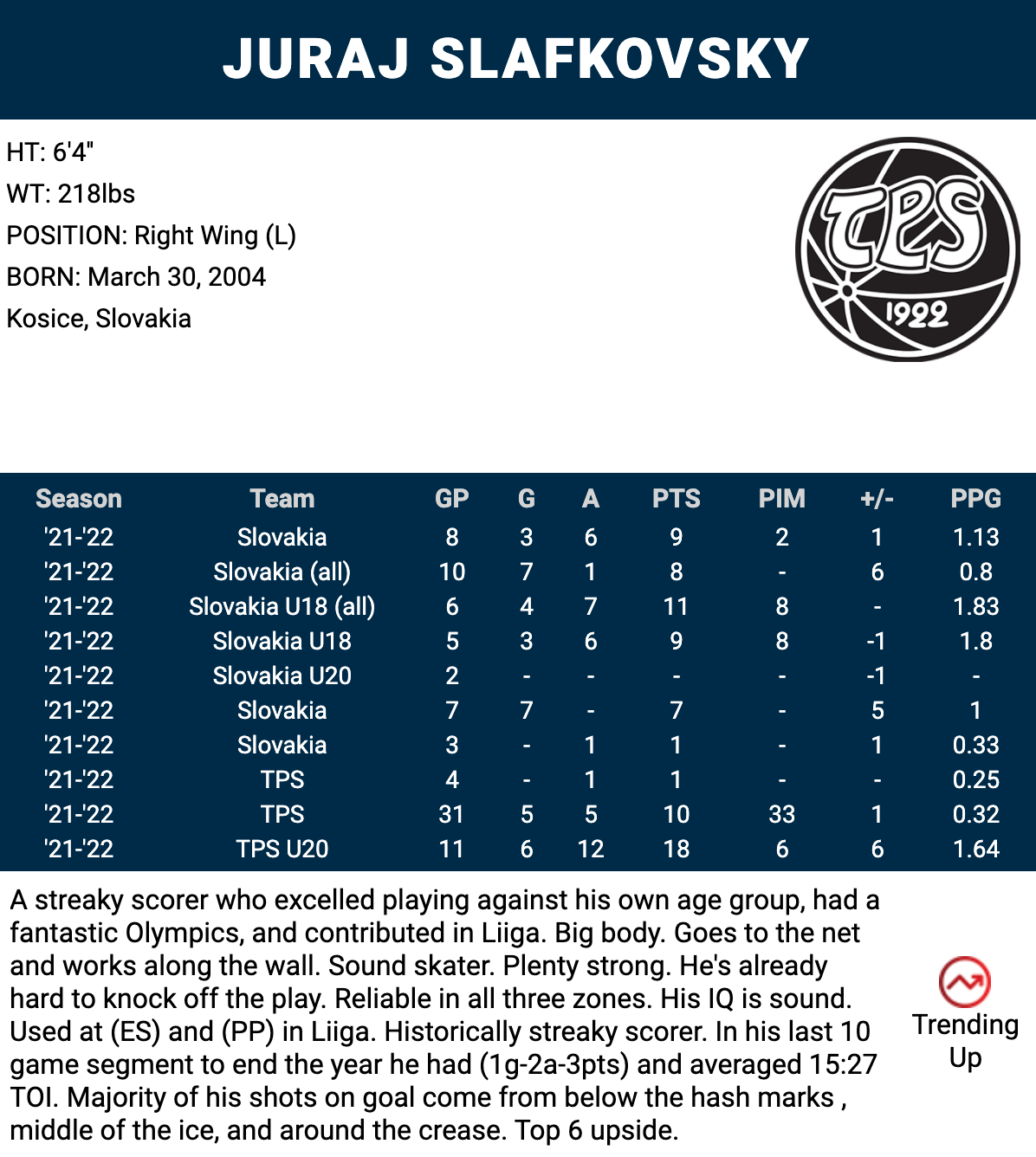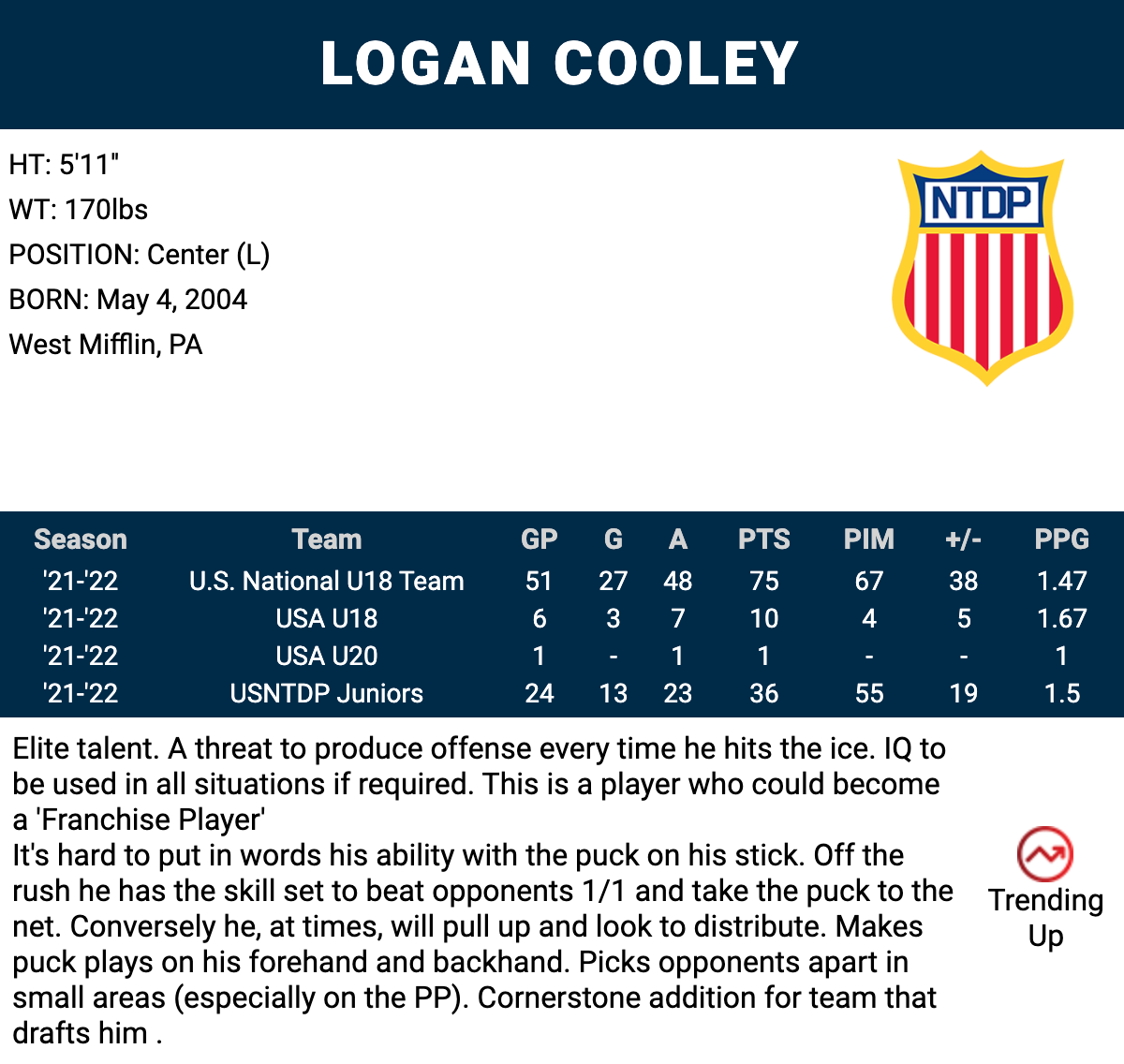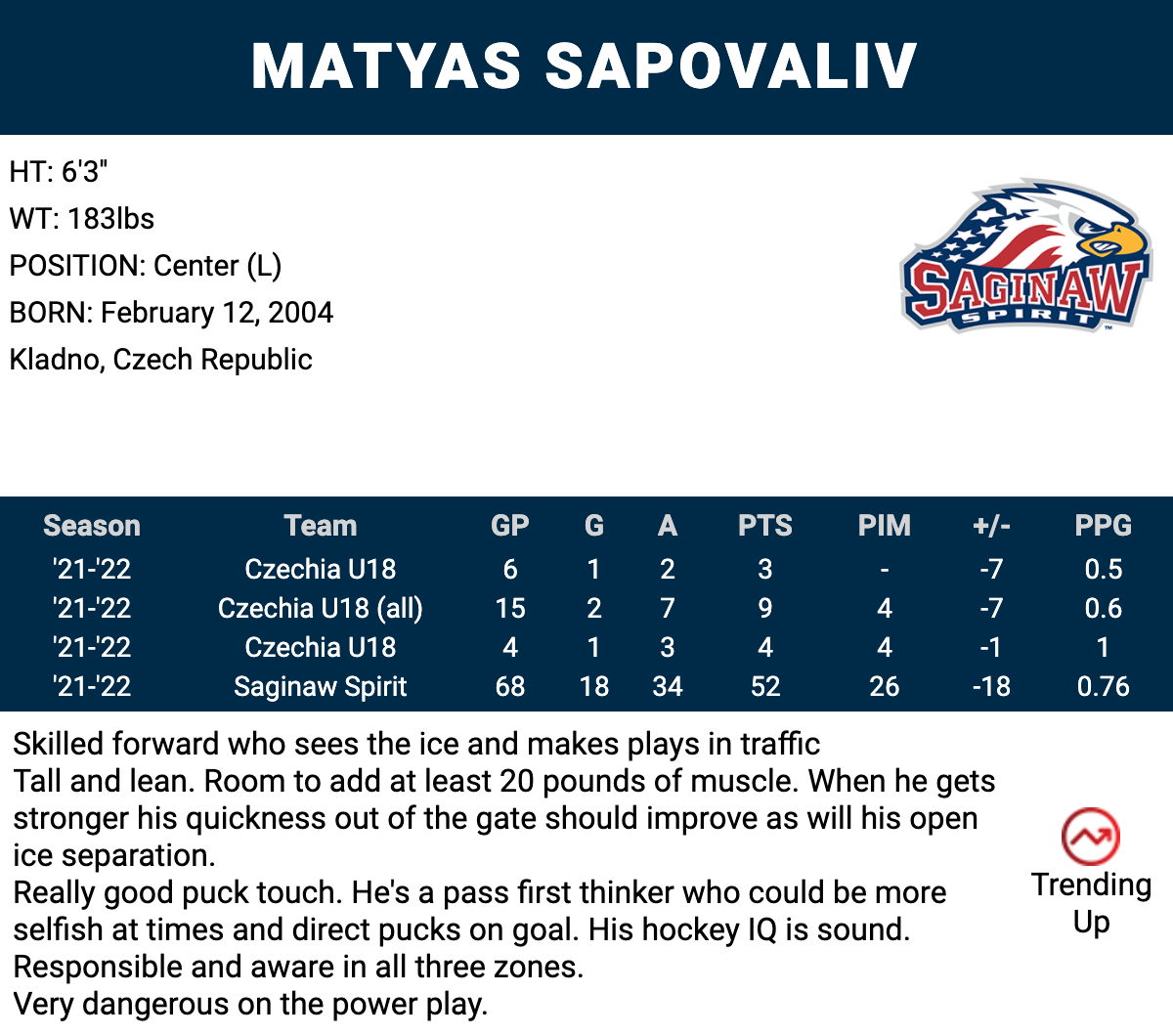The NHL Draft Combine returned to Buffalo last week, giving NHL clubs and the media an opportunity to meet with some of the top prospects for the upcoming draft in Montreal July 7-8. I was fortunate to be there to speak to some of these players, along with colleagues Caroline Cameron, Sam Cosentino and Jeff Marek.
As a former Director of Amateur Scouting my role was a little different than theirs was at this event. I was looking for specific information from the prospects to form my final opinions and rankings for these players, just as I would with an NHL team.
On that note, I’m often asked about what the overall value is of the draft combine from a team perspective.
Here are some of the most asked questions, and answers, along with my observations from Buffalo:
Q: How much stock do teams put in the Fitness Testing and can it have an effect on a prospect's projected draft slot?
A: Fitness testing has never resulted in significant upward or downward movement for a prospect. I’ve attended 17 combines in my career and cannot recall a single player that I have moved up or down as a result of the testing.
To be eligible for the draft, a player must be born on or before September 15, 2004.
Some players are very young for this draft, an example being Adam Sykora from Slovakia. His birthdate is September 4, 2004 making him one of the youngest players eligible.
Players who were born after September 15, 2003 (last year's draft class) are described as “late birthdays” in the scouting world. They essentially get an extra year of development before becoming eligible. “Late birthdays” from 2003 are part of the 2004 draft class.
How does this influence fitness testing? A player like David Jiricek from Czechia was born in November of 2003. He’s an example of a “late birthday” from the 2003 class that slides into the 2004 group.
So when you compare Jiricek to Sykora, one is almost an entire year older (Jiricek) than the other (Sykora). That year of growth, adding weight and muscle makes an enormous difference in what you could expect from fitness testing.
Speaking with Nashville Predators strength and conditioning coach Dave Good, he provided interesting insight. He believes 17- and 18-year-old athletes don’t fully develop for six years after their draft. He factors in both physical and mental growth when discussing the six-year path. It certainly puts things in perspective.
Q: Can a prospect rise or fall in rankings as a result of a positive or negative interview?
A: Yes.
There are many factors that go into a positive, or negative, interview. There could be a language barrier that’s hard to overcome. The room can be an intimidating experience for the prospect as well. Most players have been prepped by their representatives and coaches, so there are always “stock answers” to questions. It can become a robotic interaction. It’s when players get their guard up about direct questions that their true personalities come into view. Conversely there are always players who surprise me with their honesty and self assessment. The result can be a positive or negative impression.
The draft combine isn't the most important event on the scouting calendar, but it does play a role. Here are some of my player observations from my time in Buffalo interviewing them last week, with a look at the guys at the top and one specific player of interest ranked further down the order...
Shane Wright
It’s not easy for a prospect to carry the expectation of being the No. 1 pick in the draft, which Wright held from the beginning of the 2021-22 season. I respect how much pressure he has carried throughout the season. The reality, however, is I am in the business of finding out as much information about players as I possibly can before calling their name on draft day.
Wright compares his game to Patrice Bergeron and he explained to us his strategy and approach. However, I have some concerns about his nightly impact over a full 60 minutes. I asked him about my observation and he disagreed. I have no issue with a prospect pushing back on scouts and what we perceive as concerns. This is likely a question other teams would have asked him and I wonder what their takeaways would be from his answer to them.
Juraj Slafkovsky
This draft class includes some mammoth young men (e.g Noah Warren, 6-foot-5, 244 pounds).
When Slafkovsky walked into our interview room the look on the faces of our crew was priceless! He is a massive human being and one of the most powerful looking prospects I have ever seen. When I was in Florida with the Panthers we acquired Jaromir Jagr, who is an imposing figure as well. Slafkovsky reminded me immediately of him.
Part of my job is to research prospects behind the scenes. At times scouts unearth information that can impact our thought process and strategy. I had information that Slafkovsky had played centre ice growing up, and when I asked him about that he confirmed he had played the middle up until the past couple seasons. If this kid can play both centre and wing at the next level, it changes things.
Logan Cooley
Cooley is an interesting study coming out of the combine. Without going into the science, he has very long legs for his 5-foot-11 height and his testing related to leg power and endurance was top 10 in the class. It speaks to his explosive style and ability to make quick, fast, plays in transition and small areas of the ice.
There’s a quiet confidence brewing within Cooley. It’s not likely what Bob Motzko (Minnesota Golden Gophers head coach) wants to hear, but Cooley indicated he would possibly turn pro after one year at the college level. He went on to say he needs to work on his three-zone game and bring more detail overall. It was a sound assessment from one of the more dynamic players in the draft.
Matyas Sapovaliv
He’s a 6-foot-3, 183-pound forward who leans playmaker more than shooter. Sapovaliv was an outstanding interview. He came to the OHL (Saginaw) late last summer and barely spoke English. Fast forward to today and he speaks, and understands, the language with ease. He spoke about going to breakfast with his new teammates last fall and not being able to read the menu. Instead of asking for help he ordered a glass of water -- so his new teammates came to his rescue and ordered him a giant stack of pancakes. Sapovaliv grinned from ear to ear describing the experience.
He also spoke about working with former Montreal Canadien Tomas Plekanec back home in Kladno. Plekanec helped him with face-offs and leverage in the circle. I asked him about shooting the puck more instead of looking to pass and he was correct in identifying that he needs to add strength and start to get more selfish directing pucks on goal. An interesting player to watch, he could go as early as the middle of the first round, but maybe more likely in the back half of the round or early in the second.
